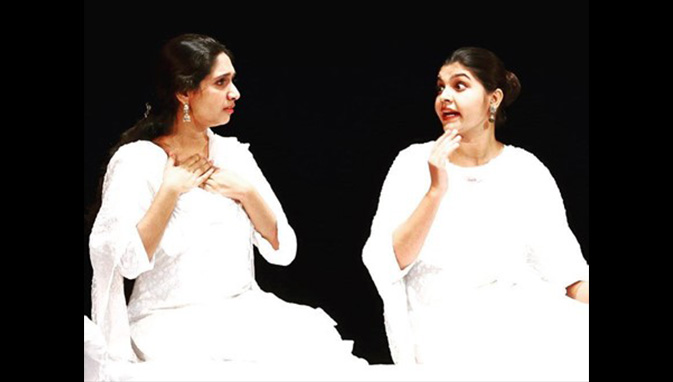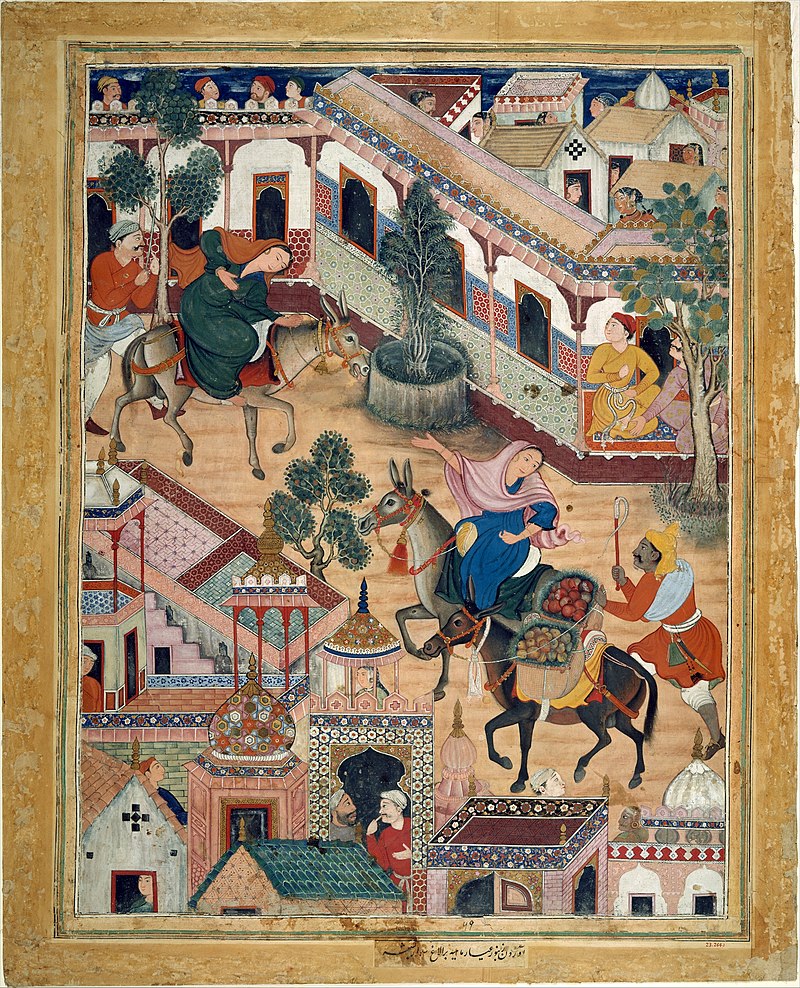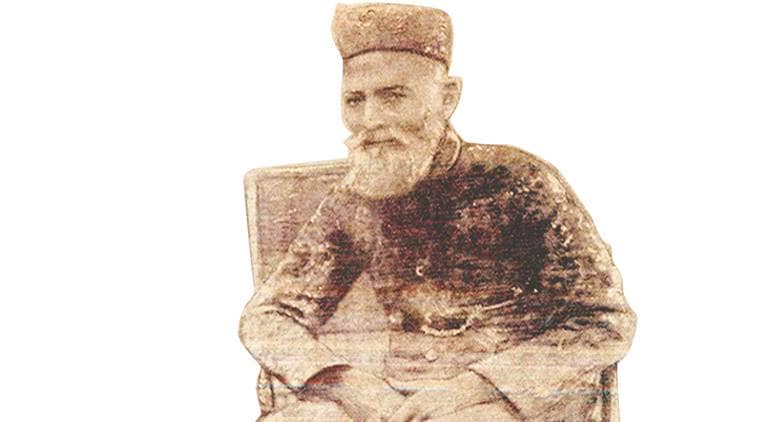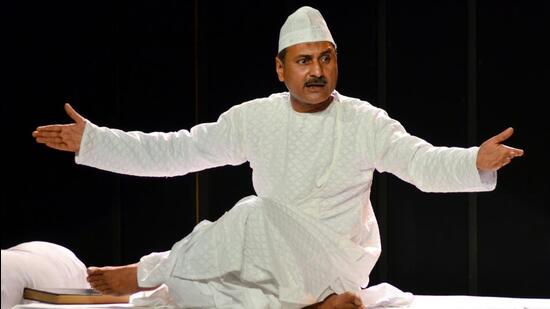The practice of oral storytelling likely emerged with the earliest forms of language. Storytelling can be a remarkable form of entertainment. Unlike written forms of storytelling, oral storytelling allows considerable intimacy and flexibility. Such storytelling permits instant molding of the tales, according to the requirements of the audience. Several epics were narrated orally for centuries before being written down. These oral narrations are crucial for preserving culture, communal knowledge, and traditions. One such tradition of oral storytelling which gained popularity in Delhi (and later in other cities of India), is called Dastangoi.

DASTANGOI:
Dastangoi is a form of storytelling that incorporates intense theatrical performance into the recitation, thereby producing a dramatised narration. It can be used to perform traditional as well as contemporary stories. The Persian word “Dastangoi” refers to a wider tradition of oral storytelling, but the artform became an important form of storytelling during the Mughal era. A unique feature of Dastangoi is its ability to make the audience an active participant by creating constant dialogue with them and directly addressing them. To avoid the audience from losing interest, the performance requires fervent acting, narrating and presentation skills as well as extensive knowledge on various subjects like warfare and politics to craft and execute these intricate stories. The stories were meant for people from varying social standings, catering to people of high literary tastes as well as common men. They are also repositories of social conventions and cultural traditions of the society of the time. For instance, Dastan-e-Amir Hamza gives descriptions of fairs, religious events, market places, and of people of various classes, castes and professions. The stories (Dastan) told by the Dastangos (storytellers) are often tales of adventure of heroes, mystic quests, magical kingdoms, wars etc. The narrators often casually borrowed elements of their tales from other famous stories or works.

ORIGINS OF DASTANGOI:
The early tradition of Dastangoi goes back as far as 9th century Persia. The tradition Five dastans, from the pre-Safavid age, have survived. These include the dastans of Alexander the Great, Persian King Darius, King Firoz Shah, trickster-hero Samak the Ayyar and that of Prophet Muhammad’s uncle Hamza (Dastan-e-Amir Hamza)
One theory about the spread of Dastan as an artistic genre in India suggests that it began around the 16th century, during the second reign of the Mughal emperor Humayun. Gradually, the artform started integrating Indian culture and tradition. The artists began using Urdu as the language of their performances. The practice of performing Dastans evolved under the reign of Emperor Akbar, during the late 16th and early 17th century.

Akbar was very fond of the Dastan-e-Amir Hamza. Due to his dyslexia (making it difficult for him to read) , Akbar commissioned the illustration of a version of Dastan-e-Amir Hamza, called the Hamzanama. It consisted of around 1400 miniatures outlining the events of the story. These miniatures might have been used as props by the medieval storytellers during their performances. The illustrations also include various aspects and influences of Indian culture.
The practice developed and gained many defining features in the intervening years between the Battle of Plassey and the Revolt of 1857. During this period, power was being lost increasingly to the British forces. Yet, the elites and aristocrats used artforms like Dastangoi as a means of escaping their reality and maintaining the façade of false prosperity. While the tradition of Dastans in India emerged in Delhi, it soon spread to other cities as well. During the late-nineteenth and early-twentieth centuries, the practice was thriving in four cities: Delhi, Lucknow, Akbarabad (Agra), and Rampur, with each city having a unique style of performance. After the Revolt of 1857, thousands of writers, poets and artists migrated from Delhi to Lucknow.

Despite beginning from Delhi, the tradition of Dastangois in India reached its peak in the city of Lucknow. The migration of Dastangos to Lucknow popularised the artform there. Abdul Halim Sharar (regarded as the first historian of Lucknow) wrote about the art of Dastangoi in “Guzishta Lucknow”. He notes that every nobleman employed a dastango in his retinue, and chowks became the preferred site of performance. These dastangos did not recite a story learnt from memory, but rather improvised on a vague structure given to them.
Urdu Dastans, like that of Amir Hamza, gained considerable admiration. After the uprising, efforts were made to print and publish the story of Amir Hamza. In the early 19th century, the Fort William College published a version of the story. In the 1850s, Munshi Nawal Kishore commissioned another publication of the story. In 1881, Nawal Kishore, with the help of renowned Dastangos of Lucknow, produced the Amir Hamza story as it was recorded in oral and written accounts. This resulted in 46 volumes of the Dastan being published in Lucknow by the Naval Kishore Press.
ELEMENTS:
Dastans mainly employed one of these four (or all four) features: razm (warfare), bazm (elegant gatherings, elaborate feasts, revelry), husn-o-ishq (beauty and love) and ayyari (magic and trickery). These stories included complex and intense tales, outlining adventures of heroes , enchantment and magic (tilism), and involved magical creatures like beasts, fairies, djinns, princesses and evil kings, magicians and wizards, etc.
A Dastan employs various elements, at the centre of which is the art of storytelling. Dastangos were meant to be knowledgeable men who could improvise the stories and convey them in the most entertaining manner. This also required exceptional acting and oration skills to engage the audience. The stories had an element of humour and wit to maintain the audience’s interest. Therefore, the Dastangos were supposed to be imaginative, innovative and inventive. The Dastangos mastered modulating their voices, changing facial expressions and gestures, as and when needed. The performance also, sometimes, included music to enhance the ambiance.
In Lucknawi dastans, tilism is given importance. These dastans reflected the social realities and culture of their times. They were also known for making appropriate use of unconventional language and phraseology.
PROBLEMS AND DEMISE:
Mir Baqar Ali (1850 – 1928) is the last known Dastango of the 19th century. Mir Baqar Ali gained prominence as a dastango, in Delhi, in the latter years of the 19th century. He performed in the darbar of Maharaja Patiala as well as other wealthy aristocrats. Ali had exceptional mastery over the narrations of dastans. He even printed and published many of his tales. However, most of them are now lost and only around 21 of his works remain. Some of his short tales include:
- Bahadur Shah Ka Maula Bakhsh Hathi (Bahadur Shah’s Maula Baksh Elephant)
- Garhay Khan aur Malmal Jaan ki Jung (the quarrel between Garhay Khan and Malmal Jaan)
- Garhay Khan Ka Dukhra (The sufferings of Garhay Khan)
- Garhay Khan Ki Dhaka-wali se Mulaqat (Garhay Khan’s Encounter with the Woman from Dhaka)
- Garhay Khan Ne Malmal Jaan Ko Talaq Di (Garhay Khan Divorces Malmal Jaan)
-

Mir Baqar Ali (Source: https://indianexpress.com/)
Unfortunately, even within his lifetime, the art of dastangoi started eroding. By the end of Ali’s life, he was left without an audience, and had to resort to selling betel-nuts as a vendor. With the death of Mir Baqar Ali, the art of Dastangoi came to a complete halt. Other factors also contributed to the discontinuation of this artform. New forms of entertainment, like film and Radio started attracting an increasing amount of people, leaving artforms like dastangoi without spectators.
REDISCOVERY AND PRESENT TIME:
For a long time after, the practice of Dastangoi was completely forgotten. However, due to the efforts of various artists and scholars, this art has been brought back to life. One important figure in the revival of the practice is Mahmood Farooqui. The revival of Dastans proved to be difficult because of the lack of information about the tradition, since the art of performance was passed down orally from generation to generation. Despite difficulties, in 2005, Mahmood Farooqui performed the first known dastan since the disappearance of the artform. Farooqui also performed stories from the Indian context, like about the life of Buddha and stories from the Mahabharat, as well as stories like Alice in Wonderland or The Little Prince. Other figures like Poonam Girdhani and Danish Husain also contributed to the spread of the artform. Efforts are being made by several other artists to keep the tradition of Dastangoi alive and thriving.

CONCLUSION:
The revival of Dastangoi is a reflection of the human need to create and to be entertained. Dastangoi is not only a source of amusement, but provides a stage for imaginative creators to continue the legacy of storytelling. Just as before, the stories performed by contemporary Dastangos are a reflection and clever observation of our current society. Along with passing down stories, these narrations help in passing down traditions and lexical knowledge. Despite facing a temporary decline, Dastangoi experienced a remarkable revival. Its revival is not just about keeping an art form alive but also about ensuring that the spirit of creativity, social commentary, and communal interaction remains a vital part of our society.
REFERENCES:
- Farooqi, Musharraf. The Simurgh-Feather Guide to the Poetics of Dastan-e Amir Hamza Sahibgiran. Annual of Urdu Studies vol. 15 (2000).
-
Navalli, Shraddha. “THE MOBILE TRADITION AND REVIVAL OF ‘DASTANGOI’ IN INDIA.” Traditional Dwellings and Settlements Review, vol. 26, no. 1, 2014, pp. 86–86.
- https://www.dastangoi.in/dastangoi-revival.php
- https://sundayguardianlive.com/culture/collective-storytellers-reviving-ancient-art-dastangoi
- https://www.mapsofindia.com/my-india/history/dastangoi-an-art-of-urdu-storytelling#:~:text=Dastangoi%20stories%20often%20tell%20of,their%20satire%20and%20social%20commentary.
- https://tornosindia.com/dastangoi-a-traditional-art-of-storytelling/#:~:text=Anatomy%20of%20Urdu%20Dastan,oral%20narrative%20at%20its%20pinnacle.
- https://shahjahanabad.eheritageproject.in/dastangoi/#:~:text=Dastangoi%20is%20an%20art%20and%20tradition%20of,as%20far%20back%20as%209th%20century%20Iran.&text=A%20good%20dastan%20employs%20at%20least%20one,and%20love)%20and%20ayyari%20(magic%20and%20trickery).
- https://books.openbookpublishers.com/10.11647/obp.0405/ch9.xhtml
- https://thebetterindia.com/118543/fouzia-first-woman-dastango-india/#:~:text=What%20is%20Dastangoi?,revival%20in%20the%2021st%20century
- https://www.dastangoi.in/view-dastango.php?id=mir-baqar-ali-the-last-dastango-of-delhi
- https://www.dw.com/en/reviving-the-lost-art-of-dastangoi-storytelling-in-india/a-50793401




